Mengjie Li
GeoOutageKG: A Multimodal Geospatiotemporal Knowledge Graph for Multiresolution Power Outage Analysis
Jul 30, 2025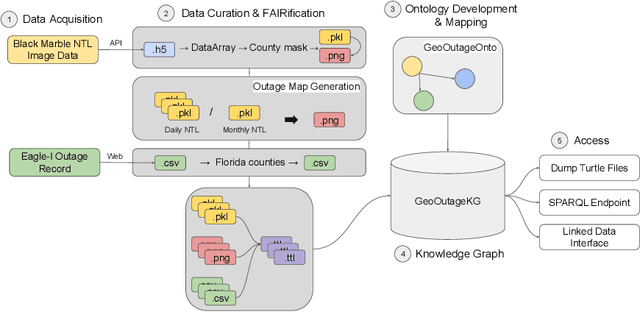
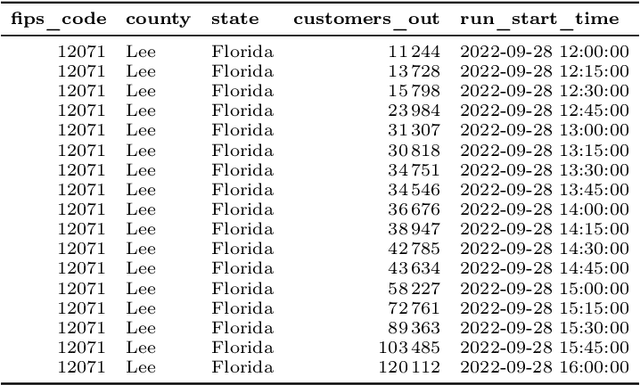
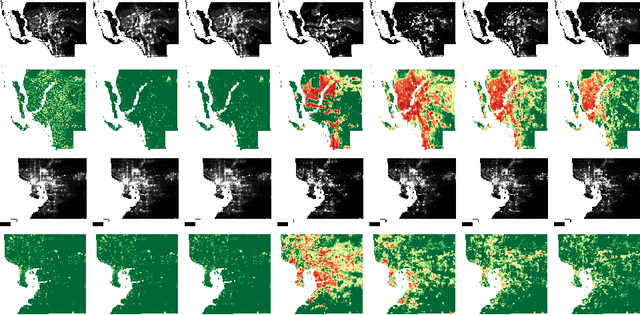

Abstract:Detecting, analyzing, and predicting power outages is crucial for grid risk assessment and disaster mitigation. Numerous outages occur each year, exacerbated by extreme weather events such as hurricanes. Existing outage data are typically reported at the county level, limiting their spatial resolution and making it difficult to capture localized patterns. However, it offers excellent temporal granularity. In contrast, nighttime light satellite image data provides significantly higher spatial resolution and enables a more comprehensive spatial depiction of outages, enhancing the accuracy of assessing the geographic extent and severity of power loss after disaster events. However, these satellite data are only available on a daily basis. Integrating spatiotemporal visual and time-series data sources into a unified knowledge representation can substantially improve power outage detection, analysis, and predictive reasoning. In this paper, we propose GeoOutageKG, a multimodal knowledge graph that integrates diverse data sources, including nighttime light satellite image data, high-resolution spatiotemporal power outage maps, and county-level timeseries outage reports in the U.S. We describe our method for constructing GeoOutageKG by aligning source data with a developed ontology, GeoOutageOnto. Currently, GeoOutageKG includes over 10.6 million individual outage records spanning from 2014 to 2024, 300,000 NTL images spanning from 2012 to 2024, and 15,000 outage maps. GeoOutageKG is a novel, modular and reusable semantic resource that enables robust multimodal data integration. We demonstrate its use through multiresolution analysis of geospatiotemporal power outages.
R-ODE: Ricci Curvature Tells When You Will be Informed
May 27, 2024


Abstract:Information diffusion prediction is fundamental to understand the structure and organization of the online social networks, and plays a crucial role to blocking rumor spread, influence maximization, political propaganda, etc. So far, most existing solutions primarily predict the next user who will be informed with historical cascades, but ignore an important factor in the diffusion process - the time. Such limitation motivates us to pose the problem of the time-aware personalized information diffusion prediction for the first time, telling the time when the target user will be informed. In this paper, we address this problem from a fresh geometric perspective of Ricci curvature, and propose a novel Ricci-curvature regulated Ordinary Differential Equation (R-ODE). In the diffusion process, R-ODE considers that the inter-correlated users are organized in a dynamic system in the representation space, and the cascades give the observations sampled from the continuous realm. At each infection time, the message diffuses along the largest Ricci curvature, signifying less transportation effort. In the continuous realm, the message triggers users' movement, whose trajectory in the space is parameterized by an ODE with graph neural network. Consequently, R-ODE predicts the infection time of a target user by the movement trajectory learnt from the observations. Extensive experiments evaluate the personalized time prediction ability of R-ODE, and show R-ODE outperforms the state-of-the-art baselines.
RCoCo: Contrastive Collective Link Prediction across Multiplex Network in Riemannian Space
Mar 04, 2024Abstract:Link prediction typically studies the probability of future interconnection among nodes with the observation in a single social network. More often than not, real scenario is presented as a multiplex network with common (anchor) users active in multiple social networks. In the literature, most existing works study either the intra-link prediction in a single network or inter-link prediction among networks (a.k.a. network alignment), and consider two learning tasks are independent from each other, which is still away from the fact. On the representation space, the vast majority of existing methods are built upon the traditional Euclidean space, unaware of the inherent geometry of social networks. The third issue is on the scarce anchor users. Annotating anchor users is laborious and expensive, and thus it is impractical to work with quantities of anchor users. Herein, in light of the issues above, we propose to study a challenging yet practical problem of Geometry-aware Collective Link Prediction across Multiplex Network. To address this problem, we present a novel contrastive model, RCoCo, which collaborates intra- and inter-network behaviors in Riemannian spaces. In RCoCo, we design a curvature-aware graph attention network ($\kappa-$GAT), conducting attention mechanism in Riemannian manifold whose curvature is estimated by the Ricci curvatures over the network. Thereafter, we formulate intra- and inter-contrastive loss in the manifolds, in which we augment graphs by exploring the high-order structure of community and information transfer on anchor users. Finally, we conduct extensive experiments with 14 strong baselines on 8 real-world datasets, and show the effectiveness of RCoCo.
A Roadmap for Big Model
Apr 02, 2022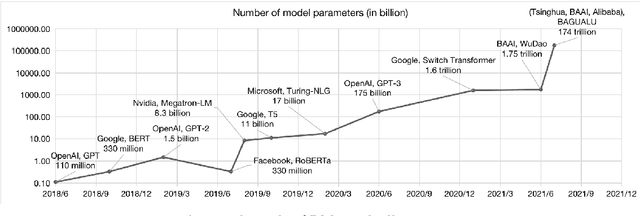

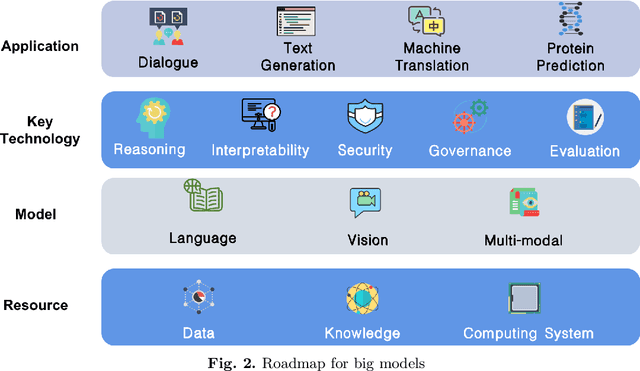
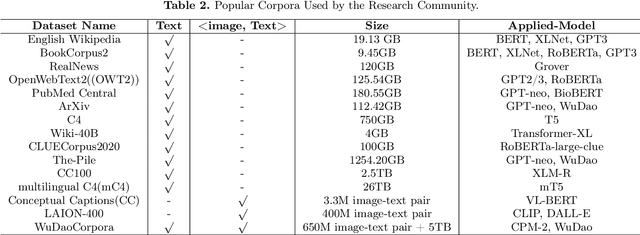
Abstract:With the rapid development of deep learning, training Big Models (BMs) for multiple downstream tasks becomes a popular paradigm. Researchers have achieved various outcomes in the construction of BMs and the BM application in many fields. At present, there is a lack of research work that sorts out the overall progress of BMs and guides the follow-up research. In this paper, we cover not only the BM technologies themselves but also the prerequisites for BM training and applications with BMs, dividing the BM review into four parts: Resource, Models, Key Technologies and Application. We introduce 16 specific BM-related topics in those four parts, they are Data, Knowledge, Computing System, Parallel Training System, Language Model, Vision Model, Multi-modal Model, Theory&Interpretability, Commonsense Reasoning, Reliability&Security, Governance, Evaluation, Machine Translation, Text Generation, Dialogue and Protein Research. In each topic, we summarize clearly the current studies and propose some future research directions. At the end of this paper, we conclude the further development of BMs in a more general view.
 Add to Chrome
Add to Chrome Add to Firefox
Add to Firefox Add to Edge
Add to Edge